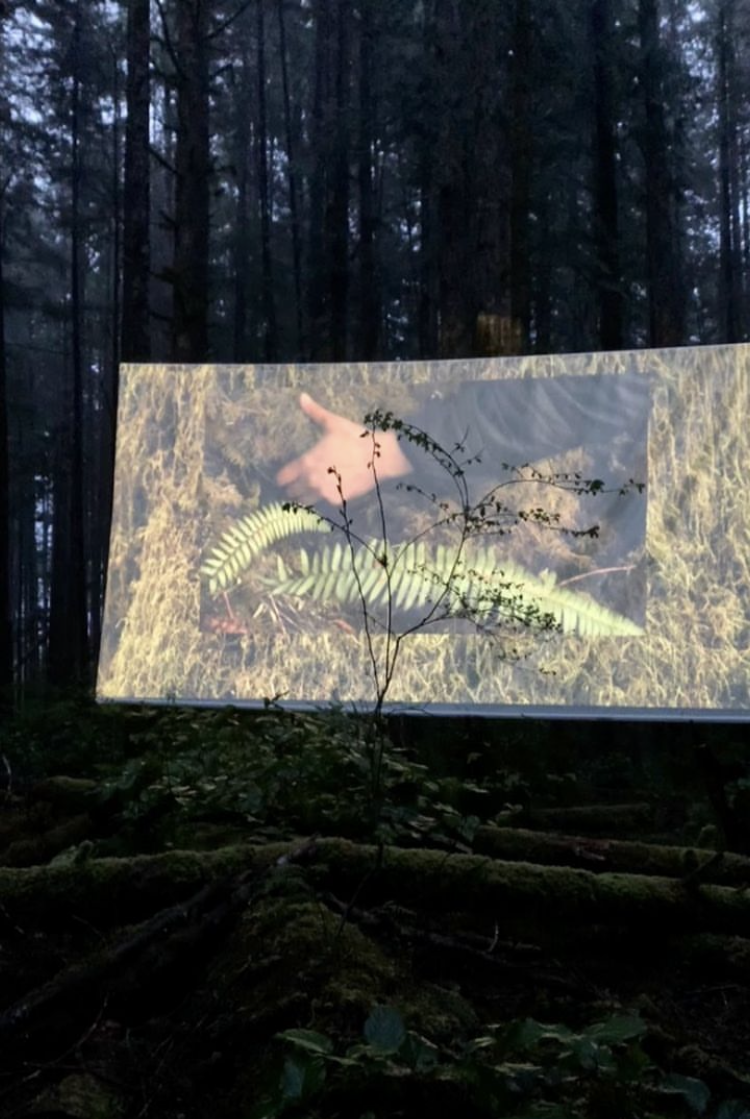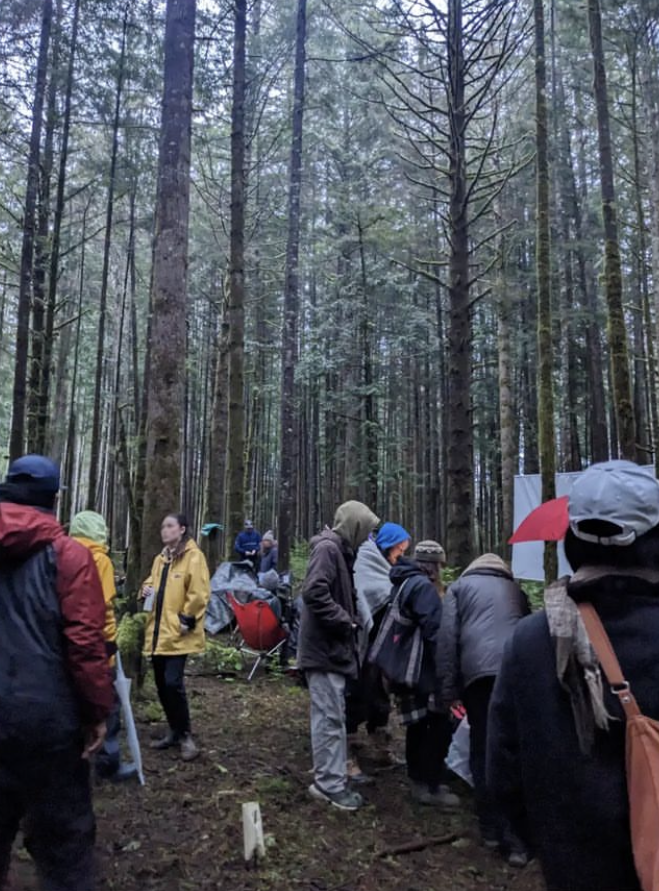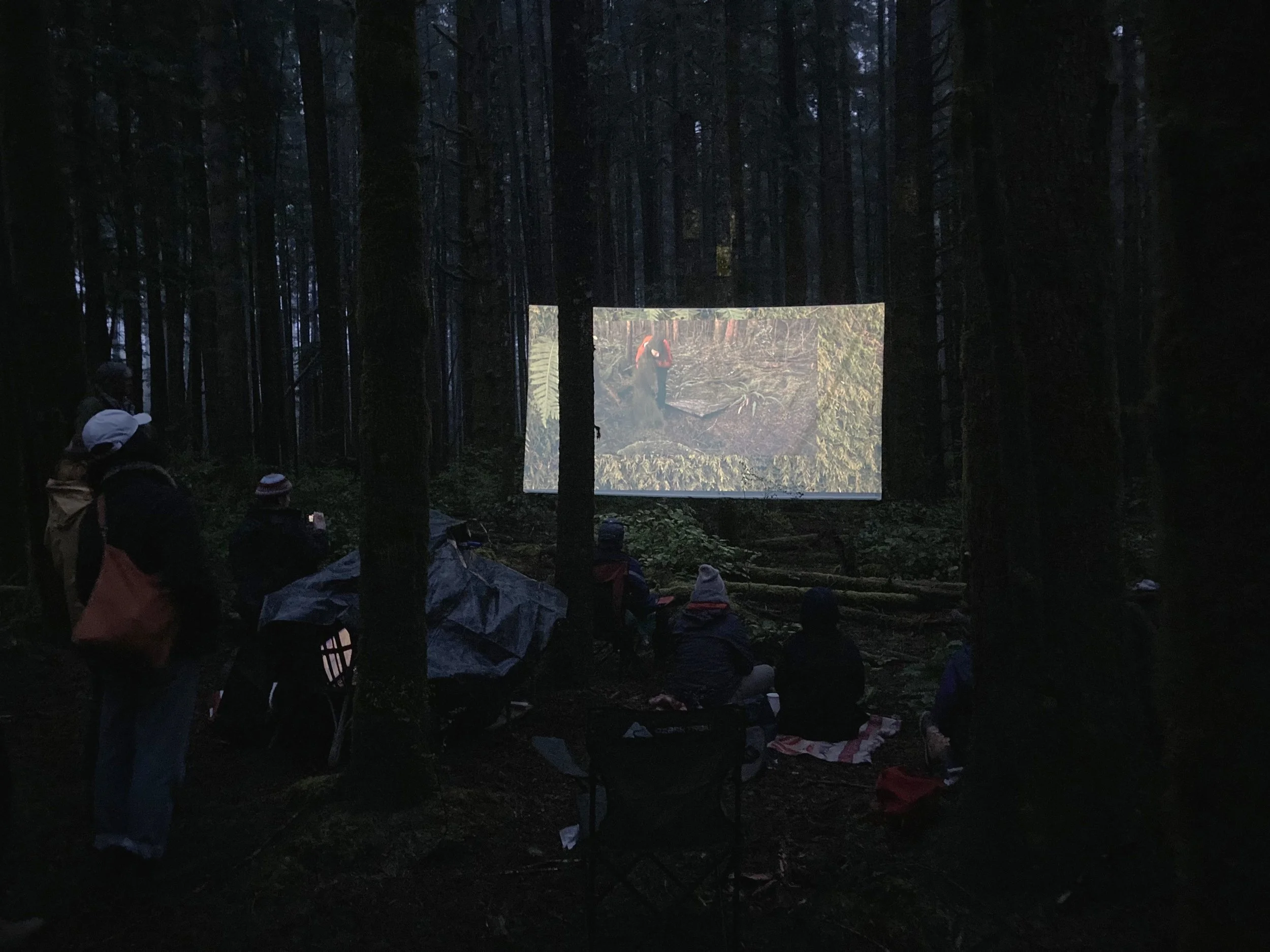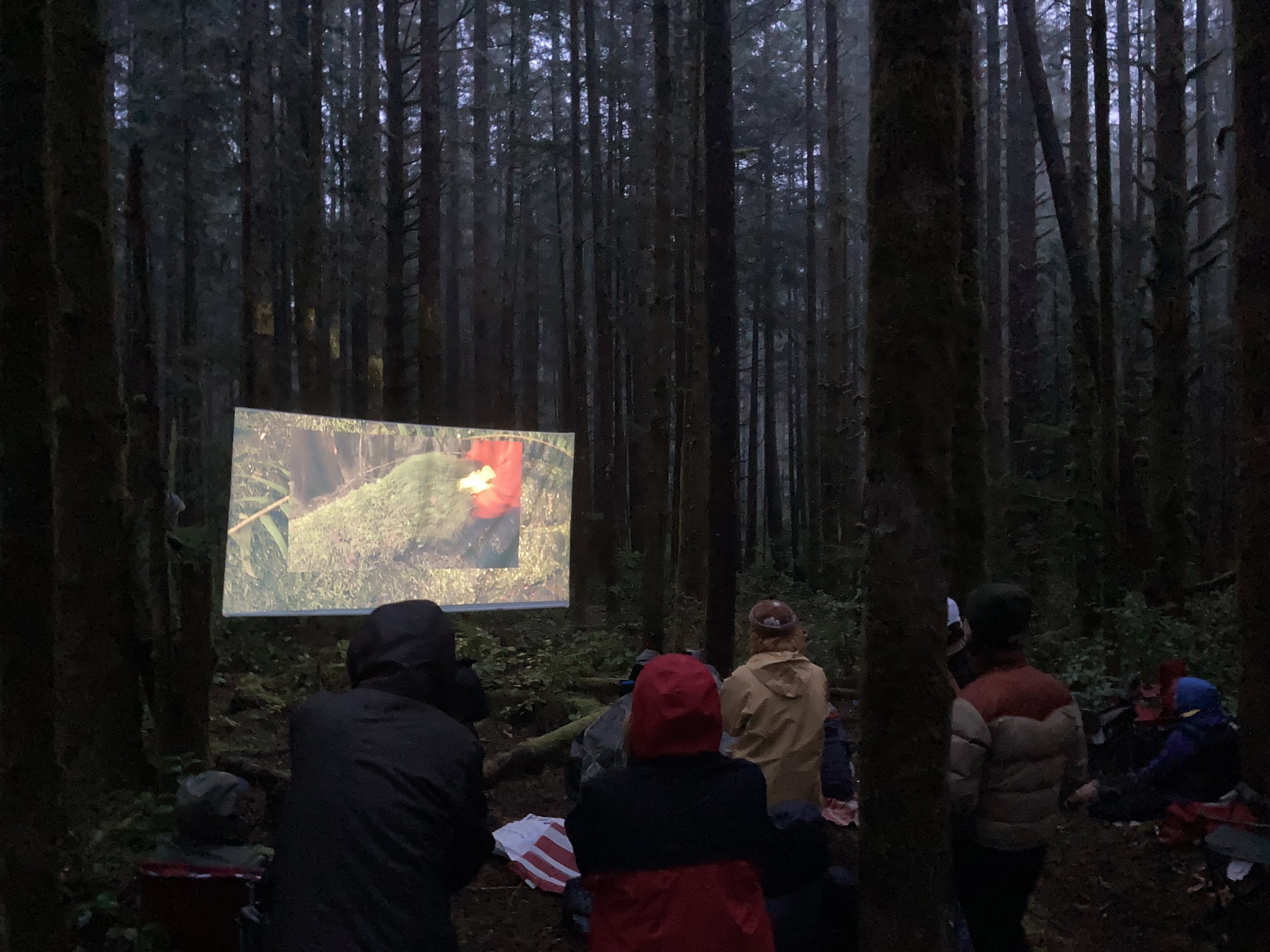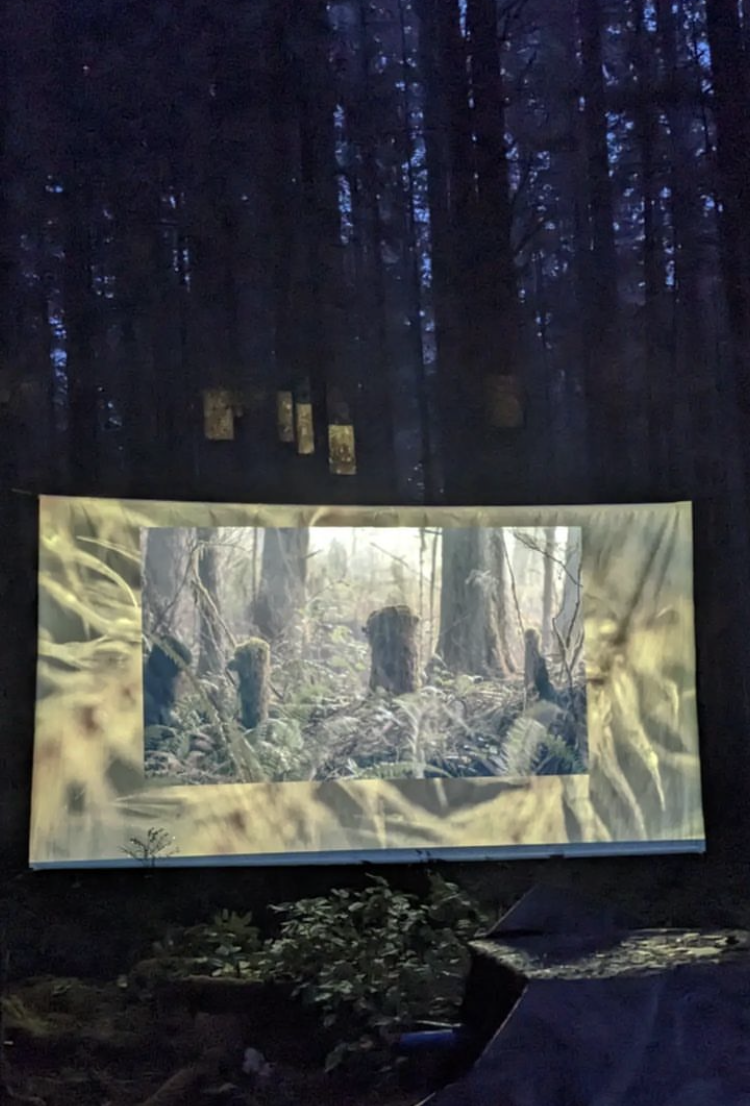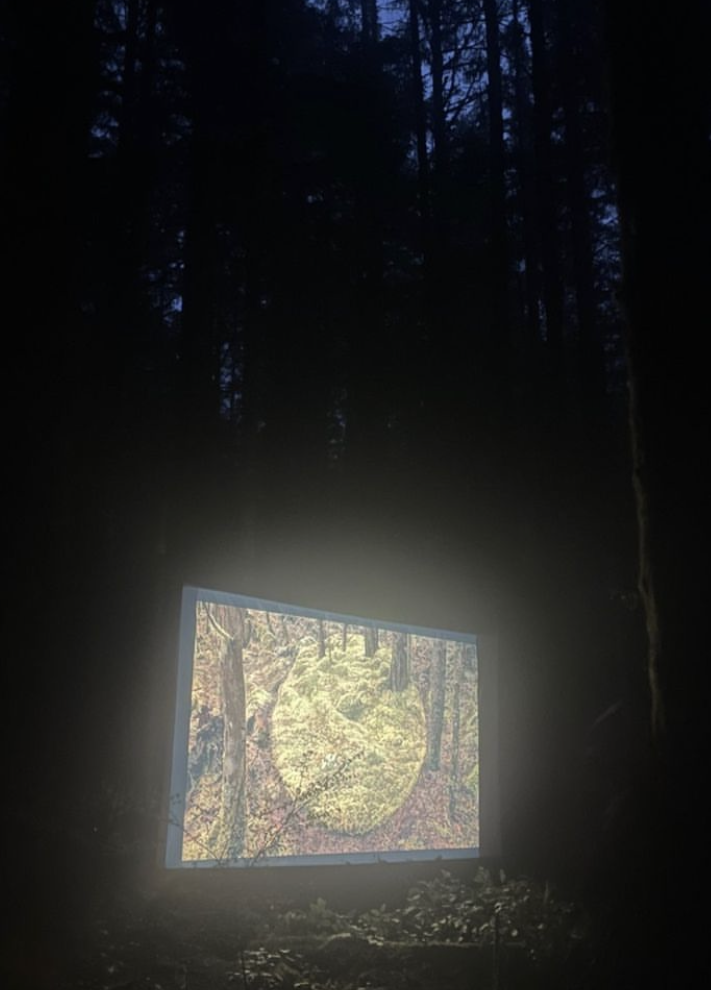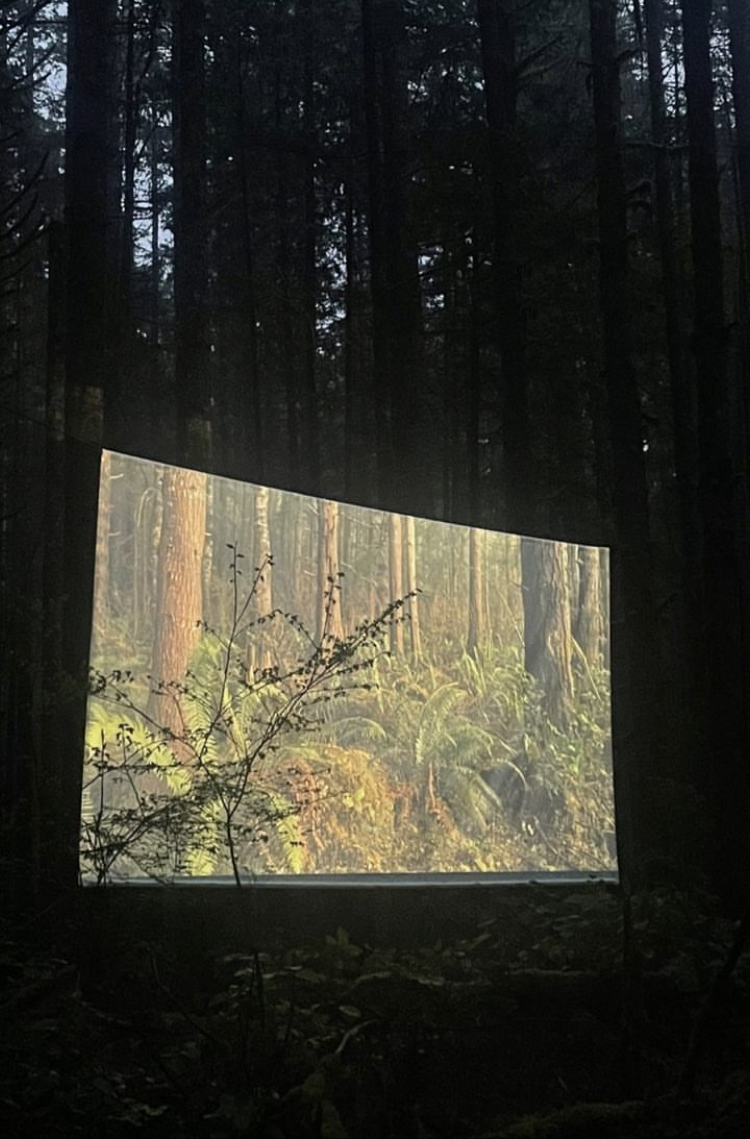The project BRYOSPHERE was the culmination of my Masters of Fine Arts thesis research, which I completed remotely through Concordia University in Montreal (due to the pandemic). Guided by my environmental ethics of minimizing harm whenever possible and due to the ecological nature of this project, I chose to not fly back to Montreal to present this thesis project. Instead, I posted it online and hosted a local screening in Pacheedaht Territory. The video, Bryosphere was first publicly screened on Earth Day in an easily accessible forest at the start of a logging road, 3 kilometers downhill from where is was shot, in Diitiida/Jordan River, BC. At this screening, the forest seemed to collaborate with us by bringing in clouds of low hanging mist and birds singing their evening songs, and again when the atmosphere created enough moisture to cause sonic interference in the audio cables, requiring me to turn down the volume, making the logging sounds on the audio track barely noticeable over the realtime birdsong. Also in attendance were around 25 humans including local land defenders, loggers, dirt bikers, surfers, artists, musicians, and biologists, all who contributed to a rewarding discussion session after the screening. No permits were acquired and no institutions were involved. I rented the screening equipment and I ran it on a battery powered from the local hydro dam. The film was projected onto a screen that my sister, mother, and I sewed from a large sheet of leftover tyvek that I purchased from a local builder (who I had recently met on the logging road on my way to work on the project). After the screening was over, I removed all the equipment (and garbage that had been there from years before I arrived), and noticed a minimal impact on the forest floor.
Above: Documentation of public video screening event for Bryosphere. Photos by Tanya Kirilova, Susan Range, Sarah Aldinger, and Emma Boreen.
Below: Documentation of the second screening of Bryosphere, put on for myself and the forest.
TERRITORIAL ACKNOWLEDGEMENT
Bryosphere was created in a second-growth forest in Pacheedaht First Nation Traditional Territory (ḥahahuułi), on stolen “crown land” leased to the local logging company, which is 50% owned by the Pacheedaht First Nation. The Pacheedaht people have been the stewards of these lands, waters, and the non-human beings who have called this place home since time immemorial. At a time when ecological and climate crises face us all, I look to the traditional Pacheedaht tenet “everything is one” to guide an anti-colonial solution-based approach.
Through the process of creating an ecological intervention within the timeline of the University semester structure I faced some ethical dilemmas. One such dilemma was the issue of Pacheedaht community consent, which I chose not to seek. Due to ongoing Treaty negotiations with the colonial government and neighbouring First Nations, as well as the social upheaval caused by the Fairy Creek old growth blockade, the Pacheedaht First Nation elected Chief and Council are busy dealing with important issues pertaining to the future prosperity of their community. As such, at the time of this project, it did not feel right to approach the Band Council about this forest-based art project. My social ties to the community are through relationships with land defenders. Consequently, I wanted to be sensitive to any tensions that approaching the Band Council government might cause (considering that in 2023, the Band Council had been publicly condemning Old Growth activism in their Territory).
My intentions while working on Bryosphere were to engage in a respectful way towards those I encountered in the forest, human and non-human. Bryosphere does not mean to criticize the Pacheedaht First Nation for carrying out logging practices in their own Territory; I appreciate and respect their need to survive economically within a colonial system that was forced upon them.




